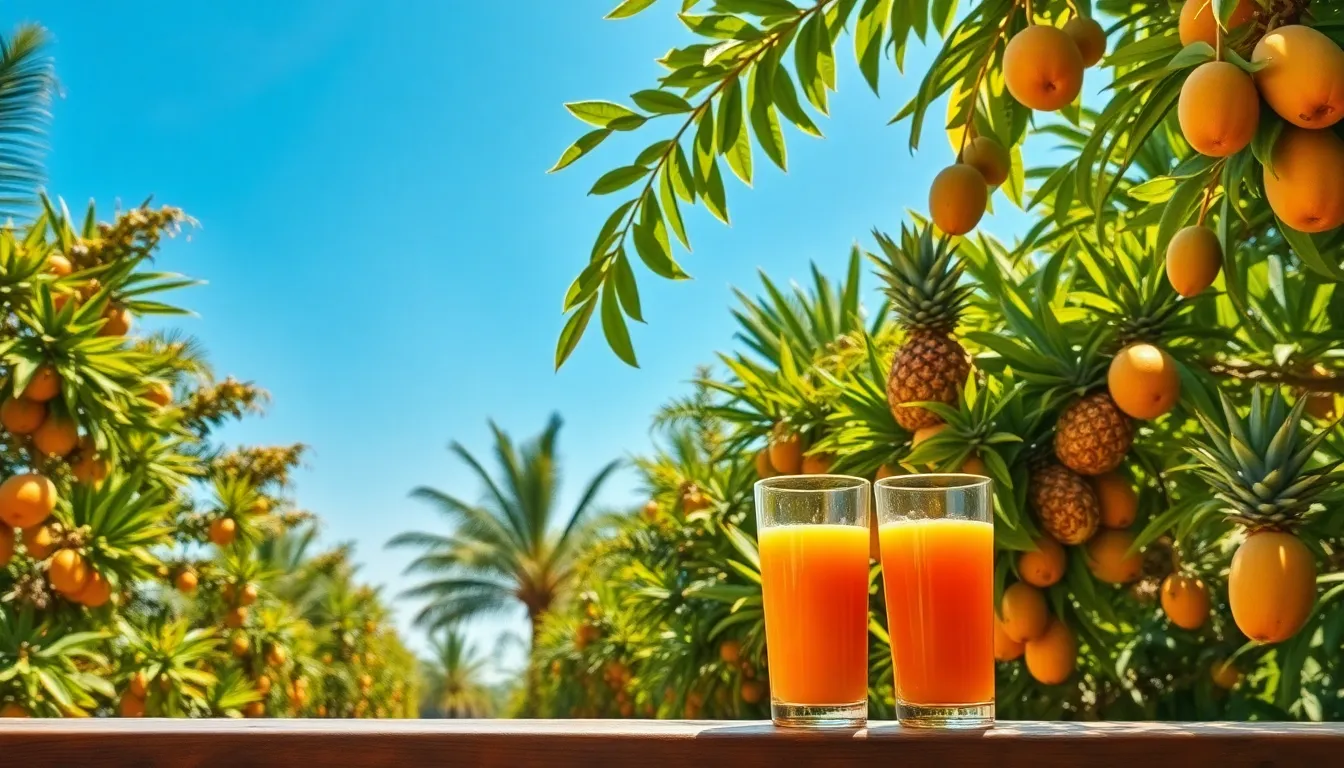Everyone’s heard the saying, “Don’t cry over spilled juice,” but what if the real mystery lies not in the spills but in the burial? Picture this: a treasure trove of flavor hidden beneath layers of mystery and intrigue. Where is juice buried? It’s not just a whimsical question; it’s a tantalizing journey into the world of hidden delights that could tickle anyone’s taste buds.
Table of Contents
ToggleOverview of Juice’s History
Juice’s history dates back thousands of years, with origins tracing to ancient civilizations. The Egyptians cultivated fruit trees and developed early methods for extracting juice. Cultures across Europe and Asia followed, pressing fruits into refreshing beverages.
In the 18th century, the popularity of fruit juices surged as exploration broadened access to tropical fruits. Juice becomes a staple in households, commonly found in local markets. By the early 20th century, commercial production took off, leading to pasteurization methods that extended shelf life.
The juice industry evolved rapidly. Innovations in bottling and packaging dominated the market during the post-World War II era. Brands emerged, introducing diverse flavors and marketing them as nutritious alternatives to carbonated drinks.
Nutritional awareness increased during the 1980s, prompting health-conscious consumers to choose juice for its vitamins. The introduction of juice from concentrate became popular, providing convenience and cost efficiency. Organic juice gained traction in the 1990s, reflecting a broader trend toward clean eating.
Today, juice’s evolution continues, with an emphasis on natural ingredients and cold-pressed methods. New varieties, infused with superfoods, attract health enthusiasts. Bottled juices now serve various markets, from mainstream consumers to niche health-focused groups.
The Significance of Juice

Juice holds a vital place in both cultural traditions and social practices around the globe.
Cultural Relevance
Cultural celebrations often feature juices made from local fruits. Countries incorporate juice into customs, symbolizing abundance and prosperity. In many cultures, fresh juice acts as a traditional remedy, providing health benefits that are passed down through generations. Various festivals include juice as a communal drink, fostering unity among participants. Worldwide, culinary traditions showcase unique juice recipes that highlight regional flavors. Ingredients like mangoes and pomegranates, for example, generate diverse expressions of heritage through refreshing beverages.
Social Impact
Juice’s role in social interactions impacts lifestyle and relationships. At gatherings, juice serves as a refreshing option, promoting connection and conversation among attendees. Community markets frequently feature fresh juice stands, encouraging local economies while supporting farmers. Health-conscious trends contribute to increased juice consumption as individuals prioritize wellness. Accessibility to juice can improve nutrition, especially in underserved areas. Juice bars and cafes encourage socializing, becoming popular spots for friends and families. Emerging movements often highlight sustainable practices, enhancing awareness of environmental impact while enjoying juice.
Theories Surrounding Juice’s Burial
The intrigue surrounding juice’s burial captivates many. Various theories attempt to explain where it might be hidden.
Popular Places Proposed
Some enthusiasts suggest tropical fruit orchards as potential burial sites. Others speculate urban juice bars conceal secret locations. People often believe forgotten marketplaces may hold undiscovered juice treasures. Community festivals also spark curiosity, leading many to theorize that local celebrations might unveil juice’s true resting place. Each proposed site ties back to the rich cultural traditions associated with juice.
Historical Context
Ancient civilizations often left clues about juice extraction methods. Evidence from archaeological sites indicates that early juice-making techniques thrived over centuries. Historic texts highlight the significance of juice in ancient rituals, emphasizing its role during communal gatherings. As explorers introduced new fruit varieties, societies embraced juice as a symbol of wealth. Throughout history, the evolution of juice production reflects cultural practices, influencing modern interpretations of where juice could be buried.
The Search for Juice’s Final Resting Place
Explorers seek clues about juice’s intriguing hidden treasures. Various theories suggest unique locations for buried juice, captivating enthusiasts globally.
Known Searches and Expeditions
Numerous searches focus on tropical fruit orchards. Urban juice bars also attract attention due to their rich cultural connections with local fruits. Forgotten marketplaces become intriguing sites for exploration, offering potential links to past juice traditions. Researchers have documented expeditions uncovering ancient juice extraction methods, revealing historical significance. Groups of enthusiasts often collaborate to investigate these historic locations, providing insights into juice’s role in cultural rituals.
Recent Developments
Recent discoveries highlight a surge in interest regarding juice-related archaeology. Scholars study artifacts revealing ancient juicing techniques, enriching understanding of juice’s significance. Innovative technologies assist in analyzing historical juice production sites, showcasing their impact on local economies. Growing movements for sustainability have encouraged local communities to revive traditional juice practices. Juice blogs and forums continue to share the latest finds, fostering connections among participants in these explorations. As interest grows, new expeditions are organized, further pushing boundaries in the search for juice’s final resting place.
The quest for where juice is buried continues to inspire curiosity and exploration. As enthusiasts delve into the rich history and cultural significance of juice, they uncover connections that transcend time and geography. The search for hidden treasures in tropical orchards and urban juice bars reflects a broader appreciation for the flavors and traditions that juice embodies.
With ongoing archaeological discoveries and advancements in technology, the journey into the world of juice is far from over. Each new finding adds depth to the narrative of juice’s evolution and its role in communities worldwide. As the fascination with juice grows, so does the commitment to sustainable practices and the revival of traditional methods, ensuring that the legacy of juice remains vibrant for generations to come.








